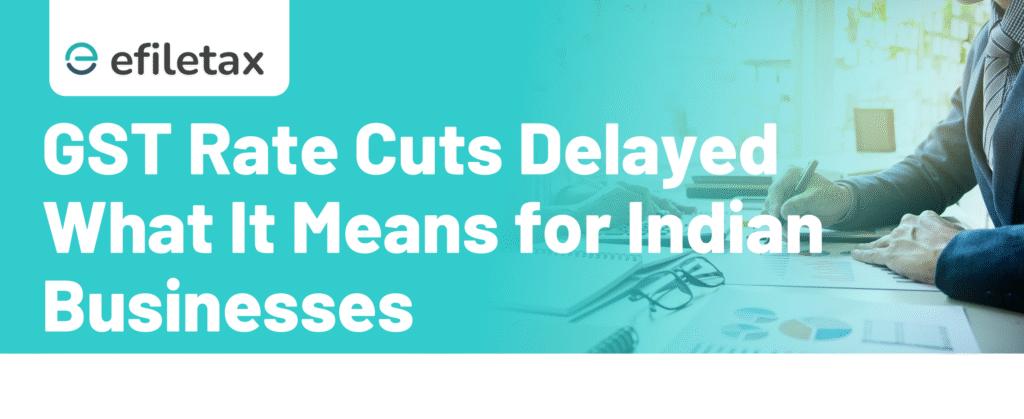
No GST Rate Cuts Yet as Group of Ministers’ Report Still Awaited
The focus keyphrase “No GST rate cuts yet” is now making headlines again as the Finance Ministry confirms that the much-anticipated rate rationalisation plan is still in limbo. The Group of Ministers (GoM), tasked with overhauling GST slabs and removing anomalies, has not yet submitted its final report.
Let’s break down what this means for Indian taxpayers and businesses.
What Is the GST Rate Rationalisation Plan?
The GST Council had formed a Group of Ministers (GoM) under the chairmanship of Karnataka CM Basavaraj Bommai in September 2021.
Objective:
To review the current GST rate structure, which includes:
- 5%, 12%, 18%, and 28% slabs
- Inverted duty structure issues
- Exemptions that distort Input Tax Credit chain
- Revenue-neutral rate assessment
The last significant update from the GoM came in 2022, but the final report is still pending approval. Hence, no GST rate cuts yet.
What the Finance Ministry Has Clarified
On 21 July 2025, a senior Finance Ministry official clarified:
“The GoM on rate rationalisation has not submitted its final recommendations. No decision has been taken regarding changes in GST rates.”
This directly affects hopes of:
- Reduction in GST on essential goods
- Correction of inverted duty structures
- Simplification of the tax regime
So as of now, no GST rate cuts yet — and the status quo continues.
Why This Delay Matters
1. Impact on Common Man
No relief on prices of daily-use items like packaged food, footwear, or household items.
2. Impact on Small Businesses
Inverted duty structures — where inputs attract higher GST than outputs — remain unresolved for many sectors like:
- Textiles
- Fertilisers
- LEDs
- Footwear
3. Stalled Revenue Neutrality
The original aim was to make GST revenue-neutral at ~15.5%. But current average realisation is below that, mainly due to exemptions and rate mismatches.
GST Rate Structure: Current Status
| GST Slab | Common Items |
|---|---|
| 0% | Unbranded food grains, fresh milk |
| 5% | Edible oil, footwear (up to ₹1,000), etc. |
| 12% | Processed food, mobile phones |
| 18% | Services, soaps, toothpaste |
| 28% | Luxury items, sin goods, cement |
Despite calls from trade bodies, the Council hasn’t initiated any rationalisation because GoM’s final report is awaited.
Legal & Policy Context
- GoM formed: GST Council Press Release, Sept 2021
- Relevant authority: Article 279A of the Constitution
- GST Council’s power: Recommend rate changes to the Central and State governments
- No formal minutes yet on final GoM meeting submission as per 53rd GST Council Meeting (June 2024)
Expert View: What to Expect Next?
“Rate rationalisation will only be taken up seriously after elections and once GoM gives its final numbers. Until then, businesses should continue planning under current slabs.”
— Tax Partner, Big 4 firm (anonymous)
Tip: Businesses impacted by inverted structures can still claim refunds under Rule 89(5) — but must comply with documentation timelines strictly.
Summary
No GST rate cuts yet, says Finance Ministry, as the Group of Ministers’ report on rate rationalisation remains pending. Businesses and taxpayers must continue operating under current slabs.
FAQs
Q1: Why are GST rate cuts delayed?
Because the GoM on rate rationalisation has not submitted its final report to the GST Council.
Q2: Which sectors are most impacted?
Sectors like textiles, footwear, and fertilisers continue to face inverted duty structures.
Q3: Can businesses claim refunds in the meantime?
Yes, under Rule 89(5) for input tax credit accumulation due to inverted duty structures.
Final Word
The wait continues. With no GST rate cuts yet, and the GoM’s report pending, India’s tax policy reform remains a work-in-progress. For now, businesses must stay compliant and proactive.